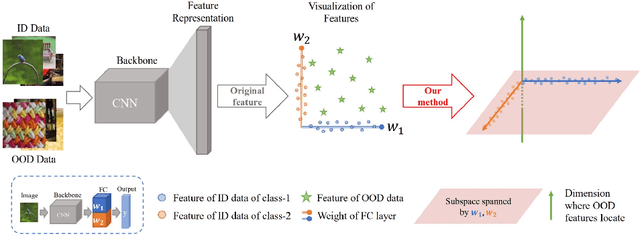Ruiji Yu
Faster Vision Mamba is Rebuilt in Minutes via Merged Token Re-training
Dec 17, 2024



Abstract:Vision Mamba (e.g., Vim) has successfully been integrated into computer vision, and token reduction has yielded promising outcomes in Vision Transformers (ViTs). However, token reduction performs less effectively on Vision Mamba compared to ViTs. Pruning informative tokens in Mamba leads to a high loss of key knowledge and bad performance. This makes it not a good solution for enhancing efficiency in Mamba. Token merging, which preserves more token information than pruning, has demonstrated commendable performance in ViTs. Nevertheless, vanilla merging performance decreases as the reduction ratio increases either, failing to maintain the key knowledge in Mamba. Re-training the token-reduced model enhances the performance of Mamba, by effectively rebuilding the key knowledge. Empirically, pruned Vims only drop up to 0.9% accuracy on ImageNet-1K, recovered by our proposed framework R-MeeTo in our main evaluation. We show how simple and effective the fast recovery can be achieved at minute-level, in particular, a 35.9% accuracy spike over 3 epochs of training on Vim-Ti. Moreover, Vim-Ti/S/B are re-trained within 5/7/17 minutes, and Vim-S only drop 1.3% with 1.2x (up to 1.5x) speed up in inference.
Pursuing Feature Separation based on Neural Collapse for Out-of-Distribution Detection
May 28, 2024



Abstract:In the open world, detecting out-of-distribution (OOD) data, whose labels are disjoint with those of in-distribution (ID) samples, is important for reliable deep neural networks (DNNs). To achieve better detection performance, one type of approach proposes to fine-tune the model with auxiliary OOD datasets to amplify the difference between ID and OOD data through a separation loss defined on model outputs. However, none of these studies consider enlarging the feature disparity, which should be more effective compared to outputs. The main difficulty lies in the diversity of OOD samples, which makes it hard to describe their feature distribution, let alone design losses to separate them from ID features. In this paper, we neatly fence off the problem based on an aggregation property of ID features named Neural Collapse (NC). NC means that the penultimate features of ID samples within a class are nearly identical to the last layer weight of the corresponding class. Based on this property, we propose a simple but effective loss called OrthLoss, which binds the features of OOD data in a subspace orthogonal to the principal subspace of ID features formed by NC. In this way, the features of ID and OOD samples are separated by different dimensions. By optimizing the feature separation loss rather than purely enlarging output differences, our detection achieves SOTA performance on CIFAR benchmarks without any additional data augmentation or sampling, demonstrating the importance of feature separation in OOD detection. The code will be published.
Point Mamba: A Novel Point Cloud Backbone Based on State Space Model with Octree-Based Ordering Strategy
Mar 18, 2024



Abstract:Recently, state space model (SSM) has gained great attention due to its promising performance, linear complexity, and long sequence modeling ability in both language and image domains. However, it is non-trivial to extend SSM to the point cloud field, because of the causality requirement of SSM and the disorder and irregularity nature of point clouds. In this paper, we propose a novel SSM-based point cloud processing backbone, named Point Mamba, with a causality-aware ordering mechanism. To construct the causal dependency relationship, we design an octree-based ordering strategy on raw irregular points, globally sorting points in a z-order sequence and also retaining their spatial proximity. Our method achieves state-of-the-art performance compared with transformer-based counterparts, with 93.4% accuracy and 75.7 mIOU respectively on the ModelNet40 classification dataset and ScanNet semantic segmentation dataset. Furthermore, our Point Mamba has linear complexity, which is more efficient than transformer-based methods. Our method demonstrates the great potential that SSM can serve as a generic backbone in point cloud understanding. Codes are released at https://github.com/IRMVLab/Point-Mamba.
 Add to Chrome
Add to Chrome Add to Firefox
Add to Firefox Add to Edge
Add to Edge